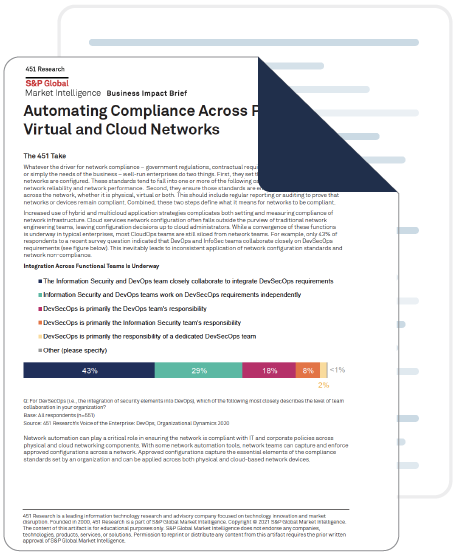Whatever the driver for network compliance – government regulations, contractual requirements, industry practices, or simply the needs of the business – well-run enterprises do two things:
- Set the standards that define how networks are configured. These standards tend to fall into one or more of the following categories: network security, network reliability and network performance.
- Ensure those standards are enforced rigidly and uniformly across the network, whether it is physical, virtual or both. This should include regular reporting or auditing to prove that networks or devices remain compliant.
Combined, these two steps define what it means for networks to be compliant.
The Impact of Achieving Compliance in the Cloud
Increased use of hybrid and multi-cloud application strategies complicates both setting and measuring compliance of network infrastructure. This inevitably leads to inconsistent application of network configuration standards and network non-compliance.
451 Research shares their take on the business impact your organization can experience by leveraging network automation to ensure compliance across physical, virtual, and cloud networks.
Download this 451 Research Brief to learn how:
- Network Automation can play a critical role in ensuring the network is compliant with IT and corporate policies across physical and cloud networking components.
- Validating configuration changes though network automation can prevent costly outages and other non-compliance events.
- Compliance as a solid foundation for automation dramatically benefits organizations.

